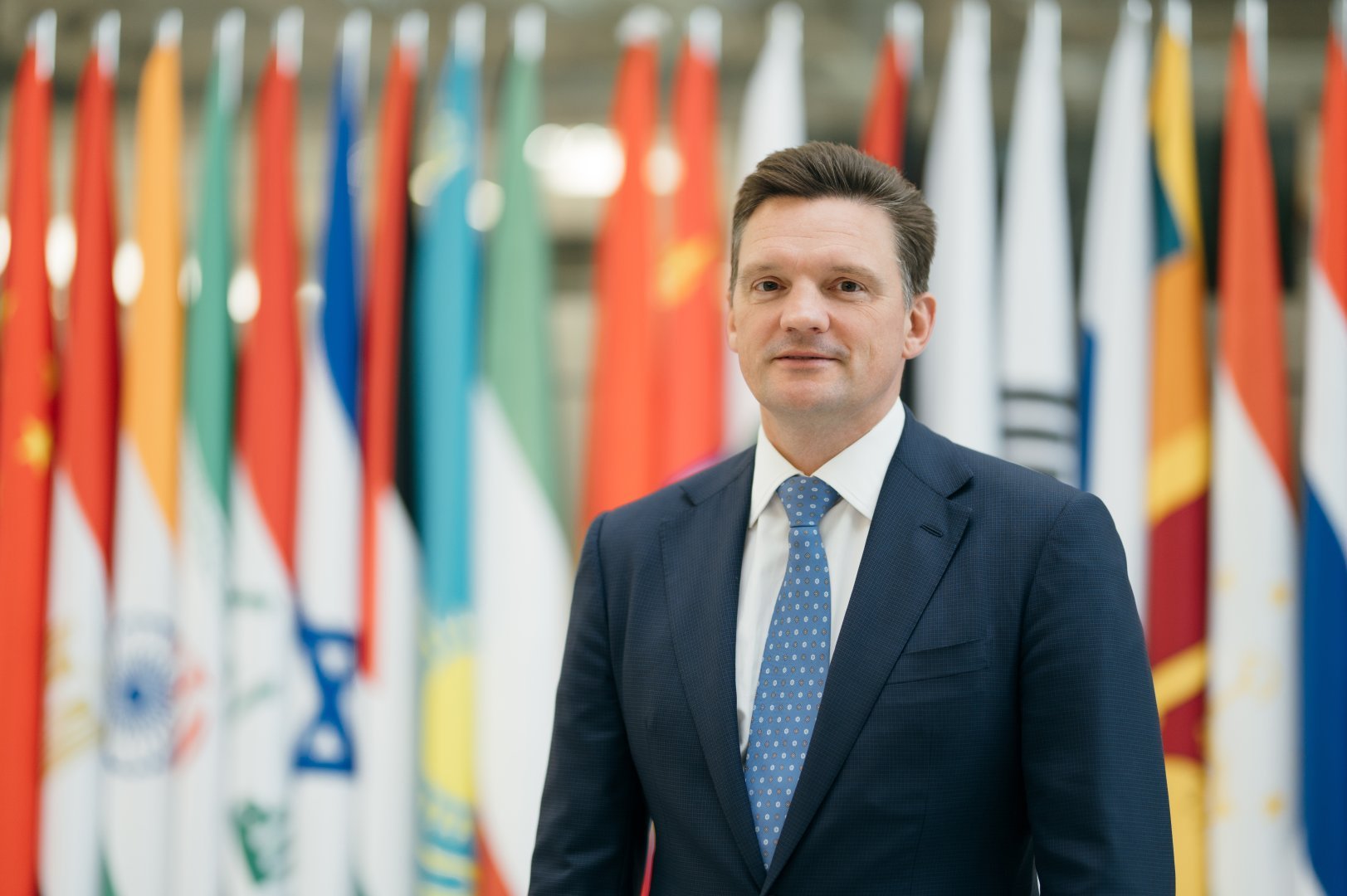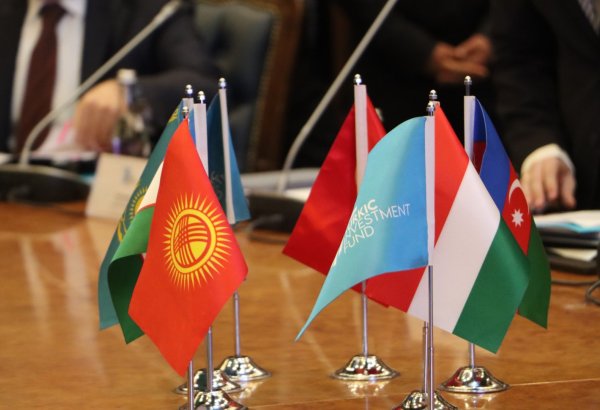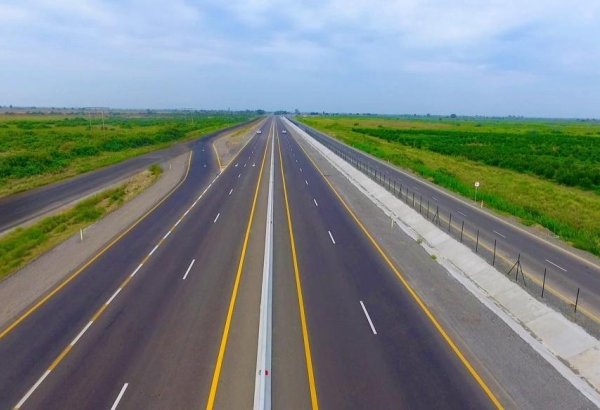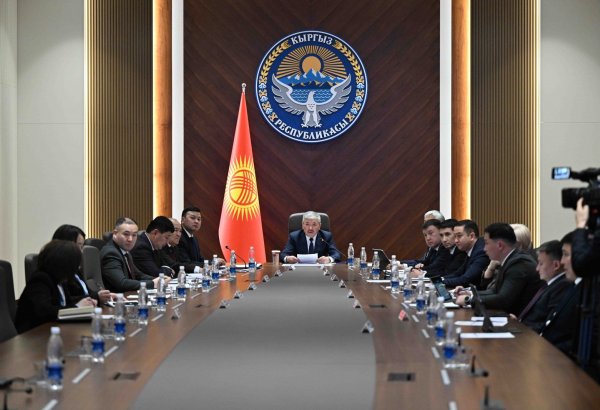BISHKEK, Kyrgyzstan, September 24. The Eurasian Development Bank (EDB) hopes to participate in the financing of the Kambarata HPP-1 in Kyrgyzstan, Chairman of the Board of the EDB Nikolai Podguzov said in an interview with TurkicWorld
"We are restoring the Bishkek Thermal Power Plant with EDB Technical Assistance Fund funds. We funded feasibility studies for numerous small hydroelectric power facilities. We are discussing participation in different projects, including a 300 MW solar power facility. The EDB wants to fund Kyrgyzstan's biggest investment, Kambarata HPP-1. We are also discussing feasibility study funds for numerous other hydroelectric projects nationwide," Podguzov noted.
He emphasized that building up the water and energy complex in Central Asia is right at the top of the EDB's to-do list.
"We have already committed to funding energy and water projects in Kazakhstan and Kyrgyzstan totaling around $940 million under our existing agreements," he stated.
Podguzov shone a light on the bustling growth of Kyrgyzstan’s energy sector, which is rolling out the red carpet for investors. Recently, a draft of the new National Energy Program of Kyrgyzstan through 2035 was given the green light, laying the groundwork for a big push in the rollout of new generating capacities and electrical networks. This program takes a stab at figuring out the investment needs in the electric power sector, aiming to hit the bullseye with around $13.9 million by 2035.
"As part of its strategy to combat climate change, Kyrgyzstan has pledged to cut emissions of greenhouse gases by the year 2030. The paper argues that the nation's carbon-free policy should be based on renewable energy sources, especially hydropower," Podguzov said.
He also mentioned that the country is rolling up its sleeves to safeguard and enhance water resource management as laid out in the National Water Strategy, which is set to run until 2040 and was adopted in 2023.
"We have faith that Kyrgyzstan's energy potential can be developed to fulfill the country's future electrical demands and add to Central Asia's integrated energy grid," he added.
Ten trends shaping the landscape of the Eurasian region's infrastructure
Podguzov identified ten critical infrastructure trends in the Eurasian region that will significantly impact all Central Asian countries, including Kyrgyzstan.
"The development of new transport routes, new gas transportation infrastructure, construction of warehouses, and the digitalization of the economy, along with the rising demand for modern urban infrastructure and increased freight traffic with China, are shaping Kyrgyzstan's economic policy today," he stated.
He noted the strengthening of regional cooperation in the water and energy sectors.
"A prime example of this collaboration is the progress made on the Kambarata HPP-1 construction project on the Naryn River. The governments of Kyrgyzstan, Kazakhstan, and Uzbekistan have agreed to jointly establish a joint-stock company for this project (of which Kyrgyzstan holds 34 percent, Kazakhstan 33 percent, and Uzbekistan 33 percent). Preparatory work is currently underway, with the HPP expected to have a capacity of 1860 MW and produce 5.6 billion kWh of electricity annually. Building this HPP under the principles of cross-border public-private partnerships will address energy and water security issues for the entire region," he explained.
Podguzov highlighted that Kyrgyzstan is actively working to develop its hydropower resources, aided by the EDB. Less than 10 percent currently utilizes the country's 252 large and medium-sized rivers, which have a potential capacity of 18.5 million kW and generate over 140-160 billion kWh of electricity, according to the bank's estimates. Notable rivers with significant hydropower resources include Naryn, Sary-Jaz, Kokomeren, Chatkal, Tar, Chu, Kara-Darya, and Chon-Naryn. One major EDB project in Kyrgyzstan is financing the construction and operation of the Kulanak hydropower station.
"Further, it's essential to recognize Kyrgyzstan's ongoing efforts to optimize water resource management. Modern water-saving irrigation technologies are being introduced, and both new and existing irrigation canals are being upgraded, which is enhancing the availability of drinking water in rural areas," he emphasized.
Podguzov also pointed out the growing cooperation between Kyrgyzstan and China, which is increasingly directing direct investments into the country, reflecting a significant trend in infrastructure and trade relations.
"This cooperation is developing in two main areas: energy and transport infrastructure. China is actively investing in the construction of renewable energy facilities, in particular solar and wind power plants. The expansion of transit and transport capabilities is also important for Central Asian countries' cooperation with China. China, Kyrgyzstan, and Uzbekistan signed an agreement in the summer of 2024 to construct a cross-border railway, which will connect the three countries and significantly enhance the conditions for mutual trade. Additionally, there are active efforts underway to enhance the capacity of border crossing points. Already in September 2024, the third automobile checkpoint "Bedel" was opened on the Kyrgyz-Chinese border," he said.
New trends in the region
"The trends we have identified will determine economic activity in Kyrgyzstan for at least two to three years. In fact, these are important areas for investment by the EDB and other multilateral development banks, as well as investors from other categories. At the same time, we understand that the volumes of investment needs in transport, energy, water, and urban infrastructure are very significant. And they will only increase. In the coming decades, the depreciation of infrastructure will become even more noticeable. Rapid urbanization will generate significant demand for modern urban infrastructure," he said.
According to Podguzov, the active introduction of new technologies, as well as climate change, is creating new needs. Trade flows in the region are shifting, leading to the creation of new transport corridors and energy links. As a result, all Central Asian countries, including Kyrgyzstan, are trying to implement both individual programs and regional cooperation initiatives for the development and modernization of infrastructure. The regulatory and institutional agenda is being updated, and new areas of regional and international cooperation open up.
"The economy is a living matter, so new trends may emerge soon. For instance, we can anticipate that our efforts to develop hydropower will enable us to establish high-tech production facilities for the manufacturing and upkeep of equipment for small hydroelectric plants. The construction of small hydroelectric power plants, especially in mountainous areas, will become an impetus for the progress of small and medium-sized businesses in agriculture, industry, and tourism," he said.
The head of the bank asserts that enhancing the nation's transport connectivity can produce numerous multiplier effects.
"For example, the development of the tourism industry will receive a powerful stimulus. In turn, tourism can become one of the country's key drivers of economic growth. For instance, plans call for the construction of the largest ski resort in Central Asia by the end of 2026. Podguzov also noted the agreement on a new 260 km long route connecting Almaty with Lake Issyk-Kul, which will pass through the city of Uzynagash and the New Kastek pass," he said.
He emphasized that with the implementation of the hydropower potential, a promising direction could be the development of electric transport and, as a result, the expansion of the corresponding infrastructure of charging stations in cities and rural areas. In 2024, a plant for the assembly of electric vehicles with a capacity of 80 thousand units per year will begin operating in the Chuy region, and in 2025, a project will start to replace old cars with electric vehicles provided to citizens on lease for 10-15 years.
"There are many such examples. And our role, as a development institution, is to actively promote the implementation of these initiatives," he said.
Cooperation with national development institutions in Kyrgyzstan
Podguzov noted that the Eurasian Development Bank is open to cooperation with national development institutions in Kyrgyzstan because their strategic goals and objectives largely align with the bank's priorities.
"There is significant potential for expanding partnerships with funds such as the Russian-Kyrgyz Development Fund, the Kyrgyz-Uzbek, the Kyrgyz-Azerbaijani, and the Kyrgyz-Hungarian Development Funds. These institutions are also focused on supporting economic growth and sustainable development of the republic by financing key projects of strategic importance for the country," he explained.
According to the bank's head, the successful cooperation with the Russian-Kyrgyz Development Fund demonstrates that joint efforts make it possible to implement large projects that have a significant impact on Kyrgyzstan's economy.
"Similar partnerships with other funds can open up new opportunities for joint projects in the fields of energy, infrastructure, and agriculture, which will further strengthen economic cooperation," Podguzov believes.
Building the Kulanak HPP
"Kulanak HPP's construction on the Naryn River is part of the EDB investment mega-project Central Asian Water and Energy Complex. The hydroelectric power plant will have a capacity of 100 MW and generate an average of 435 million kWh of electricity per year. The new renewable energy facility will be located on a territory with a total area of 485.41 hectares. The Cabinet of Ministers of Kyrgyzstan has included the project in their action plan for the National Development Program until 2026. The launch of the new HPP will strengthen Kyrgyzstan's position in the Central Asian electricity market, including by reducing the energy deficit in the region, where there is only one HPP with a capacity of 40 MW, and also increasing the country's level of energy security," Podguzov said.
He claims that the project, which the EDB Technical Assistance Fund funded, has received "green" verification and complies with the Loan Market Association's international lending standards.
"Its implementation will also prevent the emission of 346.4 thousand tons of greenhouse gases per year. The project's cost is $128 million. And it is an example of the synergy of investments between the EDB and the Russian-Kyrgyz Development Fund," Podguzov noted.
To date, construction and installation work has been completed by 16 percent. The commissioning of the Kulanak HPP is scheduled for December 2026. It is expected that 835 new jobs will be created during the facility's construction and operation, which will have positive social effects.
China-Kyrgyzstan-Uzbekistan Railway
"After commissioning, the China-Kyrgyzstan-Uzbekistan railway will become part of the Eurasian transport framework. The EDB is closely monitoring this project. A number of the bank's member countries consider it a priority, and in the future, it may affect the transport situation in Central Asia," Podguzov noted.
The expansion of interconnected routes, whether they are railways or roads, significantly boosts the economic impact on the region, primarily because of the connecting points. In this regard, the connection of this highway with other railway routes in Central Asia, including the planned Trans-Afghan Corridor, will be of enormous importance.
"These connections will create new transport and logistics opportunities for the countries of Central Asia, including the development of trade with Azerbaijan, Türkiye, and the countries of South Asia. In addition, this will allow for the further development of related infrastructure, for example, logistics centers and hubs," he added.
Podguzov also mentioned that Kyrgyzstan, Uzbekistan, and China's desire to implement this project once again confirms the trend previously outlined by the EDB to supplement the East-West and North-South corridors and routes passing through Central Asia, which contributes to the region's transformation into a crossroads of trade routes connecting Asia, Europe, and the Middle East.























